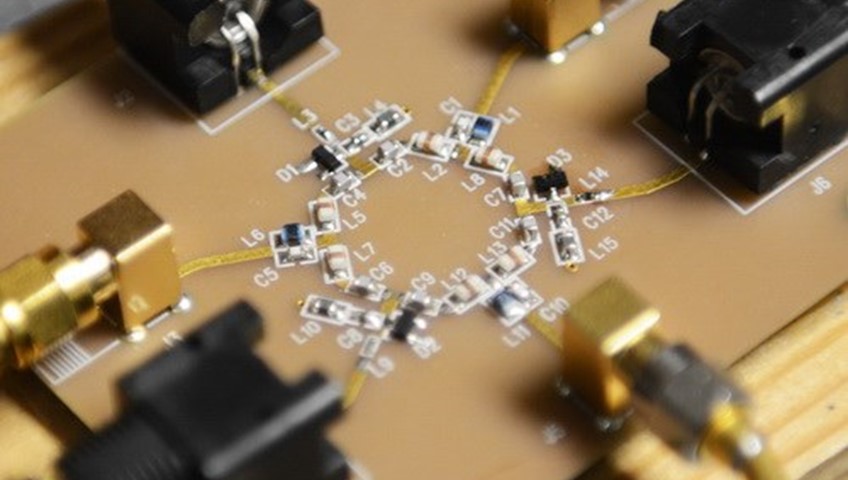
A simple new circuit design could double cellular and WiFi bandwidth
Now, a group of engineers at University of Texas, Austin is claiming to have solved this problem through the creative use of a circulator. Some of you may recall a similar plan we covered in early August, but that’s a fundamentally different solution — in that instance, a startup founded by Stanford graduates, Kumu Networks, had developed a software algorithm that allows for simultaneous transmission and reception by predicting how environmental factors will alter data transmission. This is a hardware-based solution.
The University’s Circulator
A circulator is a device that’s used to transmit a radio signal through a series of ports and to ensure that signals transmitted through one port only exit through a second port — Port 1 always comes out of Port 2, Port 2 always links to Port 3, etc. The University of Texas team claims that by using a solid-state circulator (without a typical magnetic field) it can isolate transmission and reception loops.
The group has published a paper in Nature, claiming:
The scheme is based on the parametric modulation of three identical, strongly and symmetrically coupled resonators. Their resonant frequencies are modulated by external signals with the same amplitude and a relative phase difference of 120°, imparting an effective electronic angular momentum to the system. We observe giant non-reciprocity, with up to six orders of magnitude difference in transmission for opposite directions. Furthermore, the device topology is tunable in real time, and can be directly embedded in a conventional integrated circuit. [doi:10.1038/nphys3134]
Translated into English, this means that the difference between the transmission and reception signals is enormous and can easily be picked up by the radio. It also implies a level of flexibility — the system can be tuned in real time. That’s an important breakthrough given the number of frequency bands that modern LTE and WiFi systems use for communication.
The big questions: What about power and heat?
CPU heatmapIn the past, proponents of full-duplex signaling have pooh-poohed concerns about whether or not full-speed transmission would result in a noticable increase in power consumption or device heat. I’m not convinced those concerns are invalid. Any time you increase transmission speed, you increase power consumption, and doubling up the bandwidth is going to increase heat output.
The question of how much this would impact battery life undoubtedly depends on the design of the radio and the nature of the power conservation mode. It could also depend, in non-trivial fashion, on the design of the underlying operating system. Phones that transmit data constantly or refresh open web pages frequently could quickly draw down batteries if software isn’t adjusted to intelligently time operations for the simultaneous transmit/send cycle.
Luckily, there’ll be time to work these questions out. Given the length of the radio development pipeline, its unlikely that we’d see this technology integrated into LTE modems before the 10nm node — at the very least.

